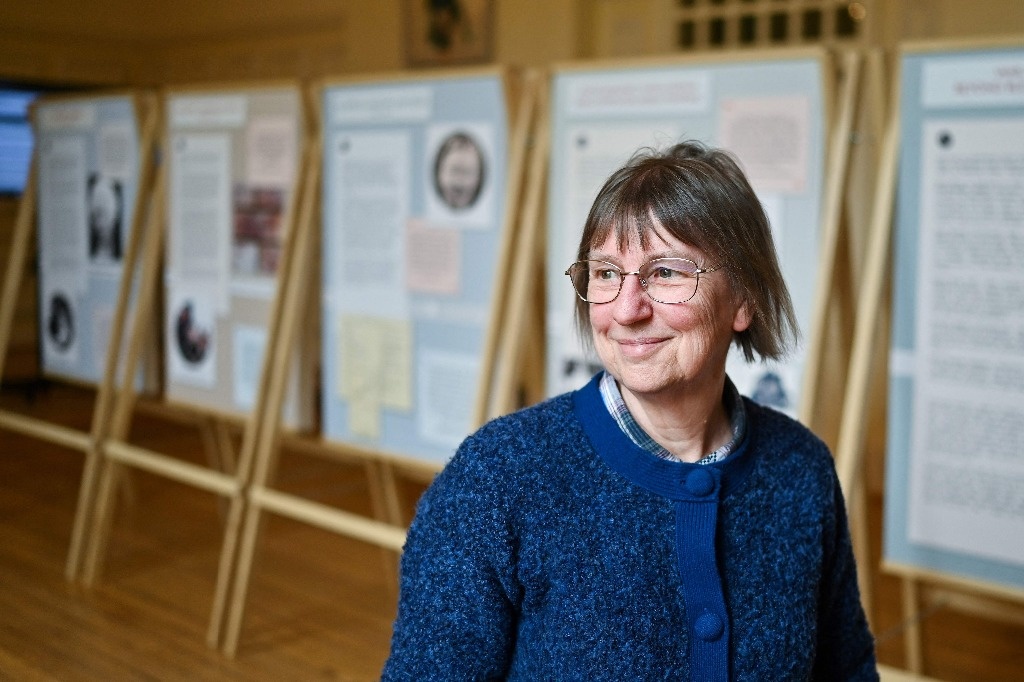Cambridge. During the Second World War, dozens of Cambridge girl students worked day and night, in secret, to crack the Nazi codes. His story has just become known almost a century later.
They all came from Newnham College, Cambridge University, which was for women and was founded in 1871 in Cambridge, central England.
During the war, at least 77 girls from this educational center worked in north London, in Bletchley Park, a military installation and mythical place of the war as it was used as a base to decipher the Nazi codes.
It was in that place where the mathematician Alan Turing deciphered the codes of the machine Enigma, used by the Nazis to encode their messages, particularly those of German submarines sailing in the North Atlantic.
According to historians, his work and, in general, that carried out at Bletchley Park, helped precipitate the fall of Adolf Hitler.
The story of these women has come to light thanks to the research, begun five years ago, by Sally Waugh, a former student and professor at this university, who is 69 years old.
Waugh wanted to highlight the role of women in that period, often ignored in history books.
No one has ever been able to thank them
explains Waugh to Afp.
I also didn’t know that people from Newnham had worked at Bletchley
he points out.
But one day she found an article that mentioned the name of an old friend, Jane Monroe, who died in 2005.
When Jane, a mathematician from Newnham, was asked what she had done during the war, “she said, ‘Oh, I made tea,’” Waugh recalls.
She was actually a code breaker. She was a friend of mine, but she never told me.
adds the author of the research.
By remaining silent about this part of his life, Monroe was only keeping his word, as he had promised not to expose these operations in the name of the Official Secrets Law
.
The article mentioned the names of three other women, whom Waugh found in university archives.
So I thought that besides those four there could be more
, Add. In fact, he found around 20 others, which rose to almost 80 after sharing his information with Bletchley Park.
The only one whose name has gone down in history has been the mathematician Joan Clarke, who was recruited in 1940 and worked with Turing, with whom she had a brief romantic relationship.
Clarke was deputy director of her unit and after the war continued to work in the intelligence services.
On the list is another mathematician, Violet Cane, particularly gifted in statistics, who worked for the naval section at Bletchley Park between 1942 and 1945.
Another significant character is Elizabeth Langstaff, who mastered the German language and had to decipher texts from raw messages, interpreting abbreviations and analyzing the results for months.
At the end of 2023, the Newnham researcher found a letter dated January 28, 1939 in which the principal of the university confirmed Bletchley Park that the faculty will be able to provide at least six girl students proficient in modern languages to work in the Ministry of Foreign Affairs in case of emergency
.
Work in key areas
Newnham eventually sent mathematicians, linguists, historians and even archaeologists to Bletchley Park.
Newnham women were represented in most key areas of work
says Jonathan Byrne, manager of Bletchley Park Trust.
Many of these women were in service on June 6, 1944
during the Normandy landings, he maintains.
His work contributed to the planning of the liberation by the Allies
continues the manager of Bletchley Park Trust, without giving details.
That morning, in response to the landing of Allied soldiers, German coded signal traffic in France increased considerably, making it a busy day at Bletchley Park, he notes.
But they didn’t know it. By listening to the radio they understood the meaning of the messages they deciphered
concludes Byrne.
#Cambridge #women #cracked #Nazi #codes #precipitating #Hitlers #downfall
– 2024-04-25 06:58:56


